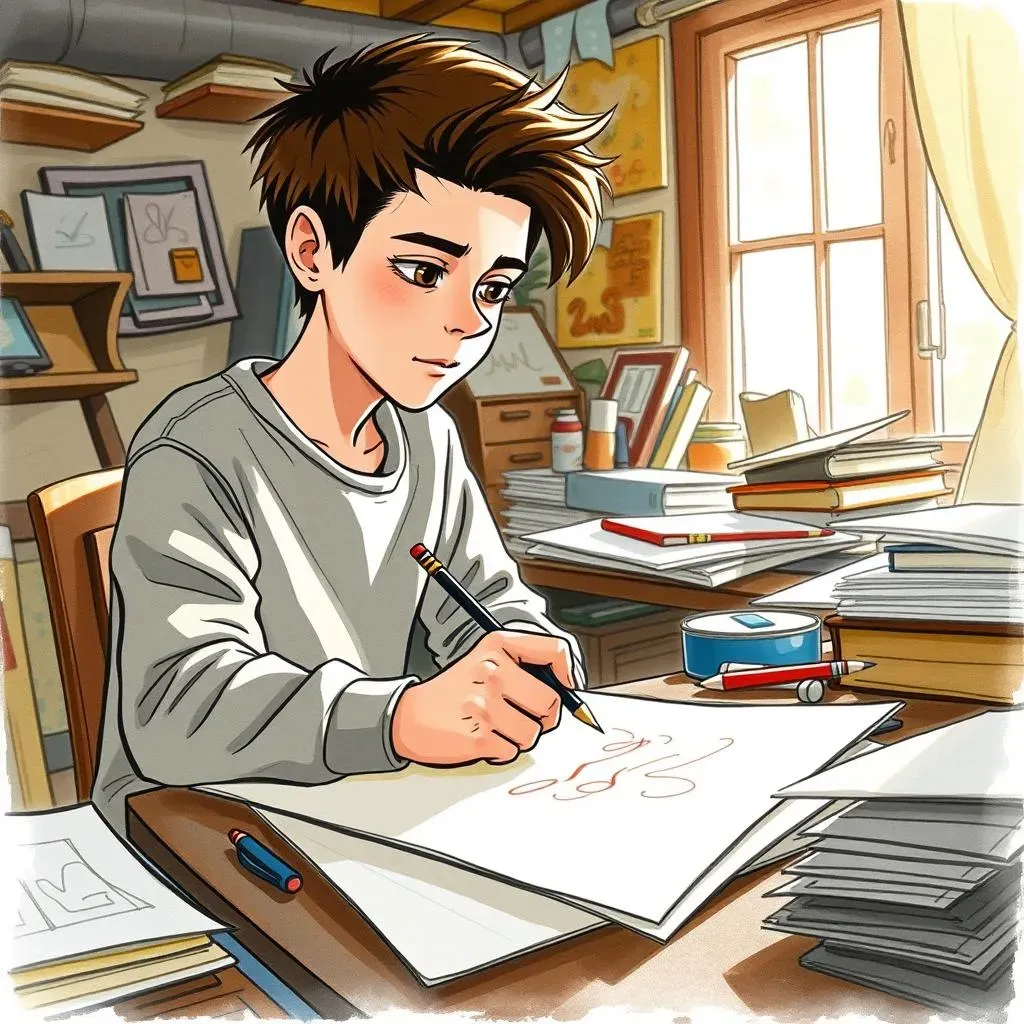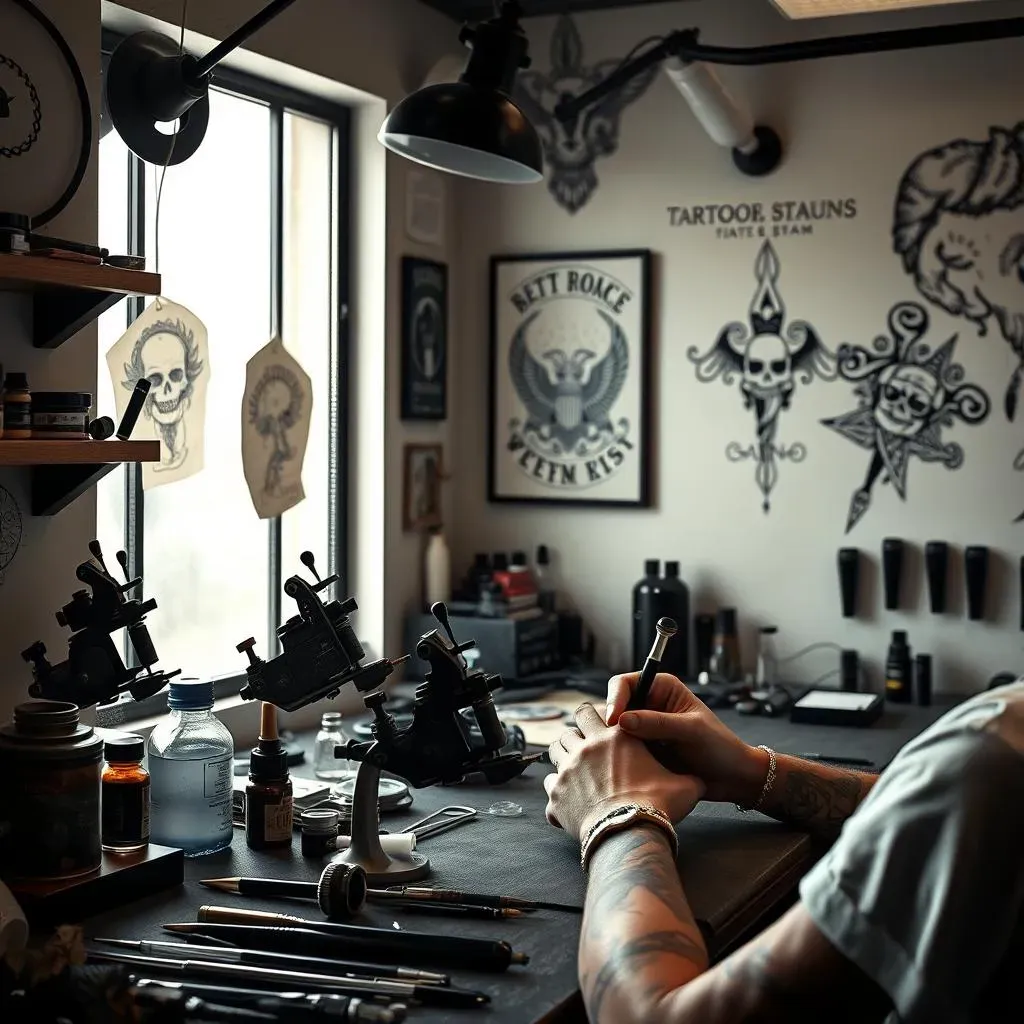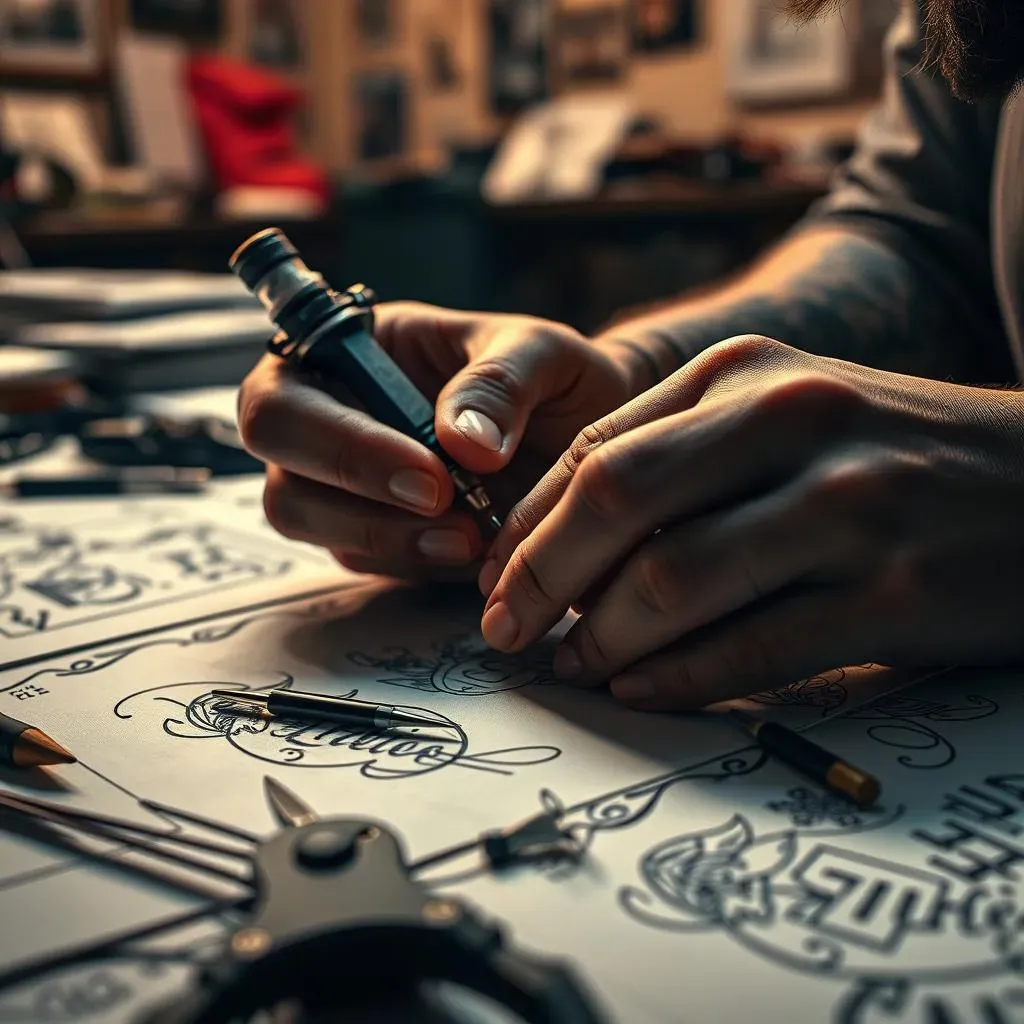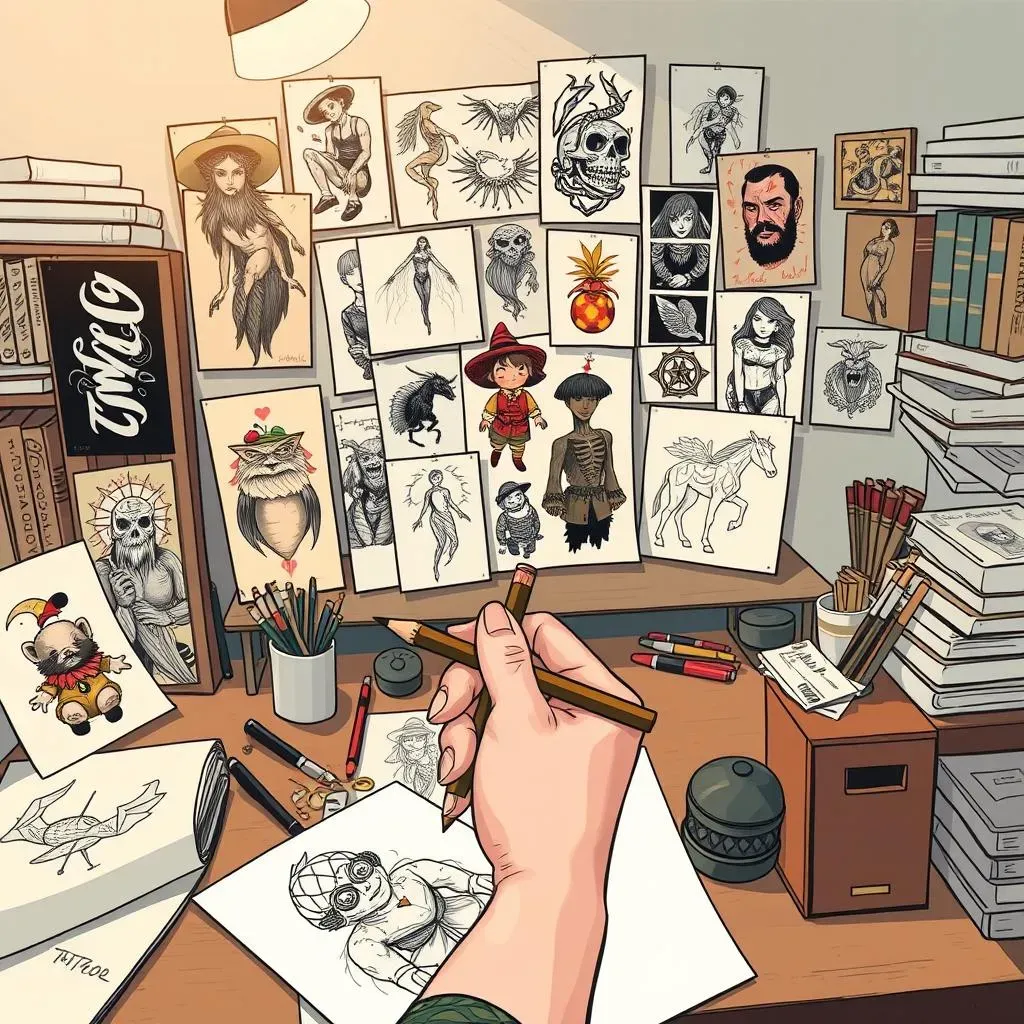Table of Contents
Ever looked at a tattoo and thought, "I wish I could create something like that?" You're not alone. Many people are drawn to the artistry of tattoos, but might not know where to start. This is where "tattoo like drawing" comes in. It's not just about sketching random things; it's about understanding the principles that make a tattoo design work. This article will guide you through the exciting world of tattoo-inspired art. We will explore how to begin your journey, from simple sketches to detailed designs, that you can use for your skin. We'll look at different styles, techniques, and how to get inspired by the best. Whether you're dreaming of inking yourself or just want to improve your drawing skills, this guide is your first step. So, grab your pencils, and let’s get started with tattoo like drawing!
Sketching Your Way to a Tattoo Design
Sketching Your Way to a Tattoo Design
Finding Your Starting Point
So, you want to make a tattoo design but don't know where to begin? It's like trying to find a specific grain of sand on a beach, right? But don't sweat it. The first step isn't about drawing perfect lines; it's about finding what excites you. Think about the things you love, whether it’s your pet hamster, a cool-looking plant, or that awesome video game character. These are all great places to start. Don't put too much pressure on yourself to draw something amazing right away. Just start doodling. Get those ideas out of your head and onto the paper, it's like brainstorming but with a pencil. It's okay to have a page full of messy lines and weird shapes. That's part of the process.
Basic Shapes and Simple Sketches
Now that you have some ideas floating around, let's move on to the basics. Start with simple shapes like circles, squares, and triangles. These are the building blocks of almost any design, whether it’s a complex dragon or a simple geometric pattern. When I was learning, I practiced drawing circles for what felt like forever. It sounds boring, but it really helped me get a feel for how my hand moves. Think of it like learning the scales on a guitar before you start shredding. Once you're comfortable with shapes, try combining them. A circle and a triangle can become a simple tree, or a few circles can become a flower. Don't worry about details just yet; focus on getting the basic shapes down. This is where the magic starts to happen.
Shape | What It Can Represent |
|---|---|
Circle | Sun, Moon, Wheels, Eyes |
Square | Buildings, Boxes, Geometric Patterns |
Triangle | Mountains, Arrows, Pyramids |
Adding Depth and Details
so you’ve got your basic shapes and a few rough sketches. Now it's time to add some depth and detail. This is where you start to make your drawing look less like a basic doodle and more like something you'd actually want to get inked on your skin. Start by thinking about line thickness. A thicker line can make something look bold, while a thin line can create a more delicate look. Try adding shading using lighter and darker lines to give your design some dimension. Don't be afraid to erase and adjust things as you go. It is all part of the process. The more you practice, the better you’ll get at seeing how different lines and details can change the overall feel of your design. Remember, every great tattoo starts with a simple sketch, so keep practicing and having fun with it!
Exploring Different Tattoo Drawing Styles
Exploring Different Tattoo Drawing Styles
Traditional Tattoo Style
so you've got the basics down, now let's talk styles. Think of it like choosing your favorite ice cream flavor, there’s a lot to pick from. Traditional tattoos are like the old-school classics, think bold lines, bright colors, and simple designs. You'll often see things like roses, anchors, and eagles. It's a style that has stood the test of time. When I first started looking into tattoo art, these were the designs that grabbed my attention. They're like the rock and roll of the tattoo world, they just have this timeless cool vibe. They don't try to be fancy; they're just solid, straightforward designs that look great. This style is also super forgiving for beginners, because the focus is more on clean lines rather than complex shading.
Neotraditional Tattoo Style
Now, if traditional is rock and roll, then neotraditional is like the modern pop version. It takes the classic elements from traditional tattoos but adds more detail, depth, and a wider range of colors. Think of it as the traditional style with a fancy upgrade. You might see the same roses and anchors, but they're now more detailed, with more shading and vibrant colors. Neotraditional designs often have more of a flow to them, they tend to be more complex and illustrative. It's like the artist is telling a story within the tattoo itself. I personally love this style because it allows for a lot of creativity while still keeping that classic tattoo feel. It’s a good style to aim for if you want something that looks both timeless and contemporary.
Style | Key Features |
|---|---|
Traditional | Bold lines, bright colors, simple designs |
Neotraditional | Detailed lines, vibrant colors, complex designs |
Sketch Style Tattoos
Sketch style tattoos are like taking a drawing straight from your sketchbook and putting it on skin. The lines are often rougher, and sometimes the shading looks like it was done quickly with a pencil. It gives the tattoo a very raw and artistic feel. It's like you're seeing the artist's creative process right on the skin. These tattoos often have a very unique and personal touch, because they look less polished and more freehand. If you are someone who loves the look of a sketch this style might be for you. I find it especially interesting because it feels like the tattoo is still in progress, like it's a living piece of art that's constantly evolving. It's a style that embraces imperfections and celebrates the beauty of the creative process.
Minimalist and Geometric Styles
On the other end of the spectrum, we have minimalist and geometric tattoos. These are all about clean lines, simple shapes, and a less-is-more approach. Minimalist tattoos might be a single line, a small shape, or a few dots, while geometric tattoos are made up of precise patterns and shapes. They are like the sophisticated, modern art of the tattoo world. These designs often have a very sleek and elegant look. I have found that a well-placed minimalist tattoo can be incredibly striking. It shows that you don't need a lot of detail to make a statement. Geometric tattoos can be super intricate, but they always maintain that clean and precise feel.
"The beauty of tattoo art lies in its diversity; there's a style for every story and every person."
Mastering Tattoo Like Drawing Techniques
Mastering Tattoo Like Drawing Techniques
Line Work: The Foundation of Tattoo Art
Alright, so we've talked about styles, now let's get down to the nitty-gritty of technique. Line work is like the skeleton of a tattoo; it's what gives your design its structure and shape. You want to aim for smooth, consistent lines, not shaky, uneven ones. Think of it like writing in cursive, it takes practice to get that flow. Start by practicing with different types of pencils and pens. Some might give you a thicker line, while others create a finer line. Experiment with different pressures, too. Light pressure will give you a thin line, while more pressure will give you a thicker one. This is all about building muscle memory, so the more you practice, the better your lines will get.
Shading and Depth
Once you've got your line work down, it’s time to explore shading. Shading is what gives your tattoo that three-dimensional look, it makes it pop off the skin, so to speak. There are different ways to approach shading. You can use hatching, which is drawing a series of parallel lines, or cross-hatching, which is drawing lines that intersect each other. You can also try stippling, which is creating shading with dots. Each technique gives a different look. When I was learning, I spent hours just filling pages with different shading styles. It sounds tedious, but it really helped me understand how light and dark can create depth. Remember, shading is not just about filling in space; it's about creating contrast and making your design look more realistic. It's like adding the shadows to a painting, it brings everything to life.
Technique | Description | Effect |
|---|---|---|
Hatching | Parallel lines | Creates subtle shading |
Cross-hatching | Intersecting lines | Creates darker shading |
Stippling | Using dots | Creates texture and varied shading |
Understanding Tattoo Placement
so you can draw, shade, and create cool designs, but have you considered the canvas? The human body is not a flat piece of paper. It has curves, muscles, and unique shapes, and these will affect how your tattoo will look. Before you start drawing, think about where the tattoo will go. A design that looks great on paper might not look as good on an arm, or a leg. You need to think about how the design will flow with the body's natural contours. For example, a long, thin design might look great on a forearm, while a more circular design might be better suited for a shoulder. Think of it like a tailor fitting clothes to a body. It's not just about the design itself; it's about how it interacts with the body. It's a crucial step often overlooked, but it can make or break the final result.
Practice with Tracing and Referencing
No one starts out as a master artist, everyone needs to start somewhere. One of the best ways to improve your drawing skills is by tracing and referencing. Tracing helps you understand how lines flow and how different shapes come together, without the pressure of creating something from scratch. Start by tracing simple images, and then move on to more complex ones. Referencing is also key. Look at real-world objects and images for inspiration. If you're drawing a rose, look at real roses. Pay attention to the details, how the petals fold, and how the light hits them. It's like learning a new language by reading books and listening to people speak. The more you trace and reference, the more you'll develop your own style. Don't think of it as copying; think of it as learning from the masters.
"Good tattoo art is not just about drawing, it’s about understanding how the design interacts with the skin and the body's unique shape."
Tattoo Like Drawing: Inspiration and Ideas
Tattoo Like Drawing: Inspiration and Ideas
Finding Inspiration in Everyday Life
so you're getting the hang of drawing and exploring different styles. But where do you find those killer ideas? Honestly, inspiration is everywhere. It's not something you need to search for in some far-off land, it’s right here, all around us. Take a walk in the park and observe the way leaves grow on a tree, or check out the cool patterns on a butterfly’s wings. Maybe you find inspiration in the architecture of your city, or the way light hits a building at sunset. I once got a great idea for a tattoo design just by looking at the way my headphones were tangled. It is like being a detective, you are constantly looking for clues and ideas. The key is to keep your eyes open and your mind curious. Don’t just look, observe, and you’ll be surprised at how many things can spark a great tattoo design.
Drawing from Nature and Culture
Nature is a goldmine for tattoo ideas. Animals, plants, landscapes – they all have unique shapes, patterns, and textures that can translate beautifully into tattoo art. Think about the intricate details of a flower, the powerful stance of a lion, or the flowing lines of a river. Culture is another amazing source of inspiration. Look at different art styles, symbols, and traditions from around the world. You might find inspiration in tribal patterns, ancient mythology, or even modern art movements. When I was first starting out, I spent hours looking at books on different cultures and their art. It was like a treasure hunt, each new symbol, pattern, or story sparking an idea for a new design. The more you explore, the more diverse your designs will become. Remember, all ideas are valid, let your curiosity be your guide.
Source | Examples |
|---|---|
Nature | Animals, plants, landscapes, celestial bodies |
Culture | Tribal patterns, mythology, traditional art, symbols |
Using References and Creating Mood Boards
So you have all these awesome ideas floating around, now it's time to get organized. This is where references and mood boards come in. References are specific images or objects that you use to guide your drawing. If you're drawing a wolf, look at pictures of real wolves. Pay attention to the details, like the shape of their ears, the way their fur looks, and the structure of their body. Mood boards are collections of images, colors, and textures that inspire you. They can be anything from pictures of nature to abstract art to color palettes. When I start a new project, I always make a mood board. It helps me get a better sense of what I want to create, and it keeps me focused. Think of it as creating a roadmap for your design journey. It is like a visual recipe for your artwork.
Personalizing Your Designs
The best tattoos are the ones that tell a story. They're not just random images; they're personal expressions of who you are. When you're designing, think about what makes you unique. What are your passions, your beliefs, your experiences? How can you incorporate those into your designs? Maybe you want to include your favorite quote, a symbol that represents your heritage, or a design that reminds you of a special memory. It is like putting a piece of your soul onto paper, and then, onto skin. Don't be afraid to experiment and break the rules. The most unique designs are often the ones that come from taking risks and pushing boundaries. Remember, your tattoo should be a reflection of you, so make it personal and make it meaningful. Let your creativity flow, and don't hold back, it is your story to tell.
"Inspiration is not a magical force; it's the result of curiosity, observation, and a willingness to see the world in new ways."
Wrapping Up Your Tattoo Like Drawing Adventure
So, you've explored the world of tattoo like drawing, from initial sketches to diverse styles and techniques. Remember, the key is practice and finding what resonates with you. Don't be afraid to experiment, get inspiration from everywhere, and most importantly, have fun with it. Whether you're aiming to become a tattoo artist or just enjoy the process of creating, the skills you've learned here will serve you well. Now go on, grab your sketchbook, and let your imagination run wild. Your next masterpiece is waiting to be brought to life!